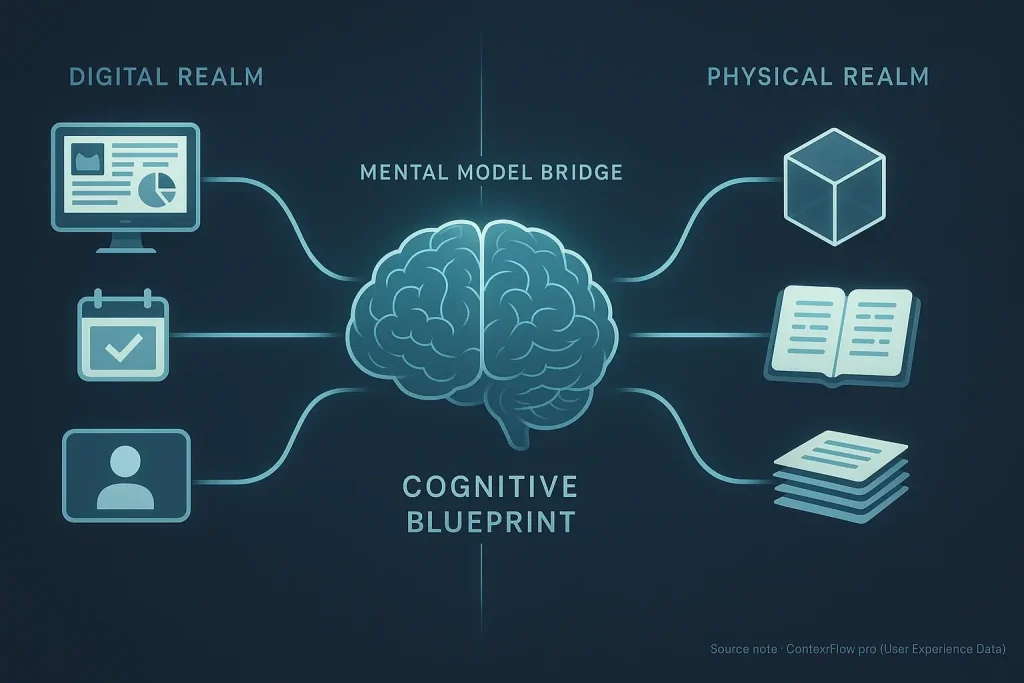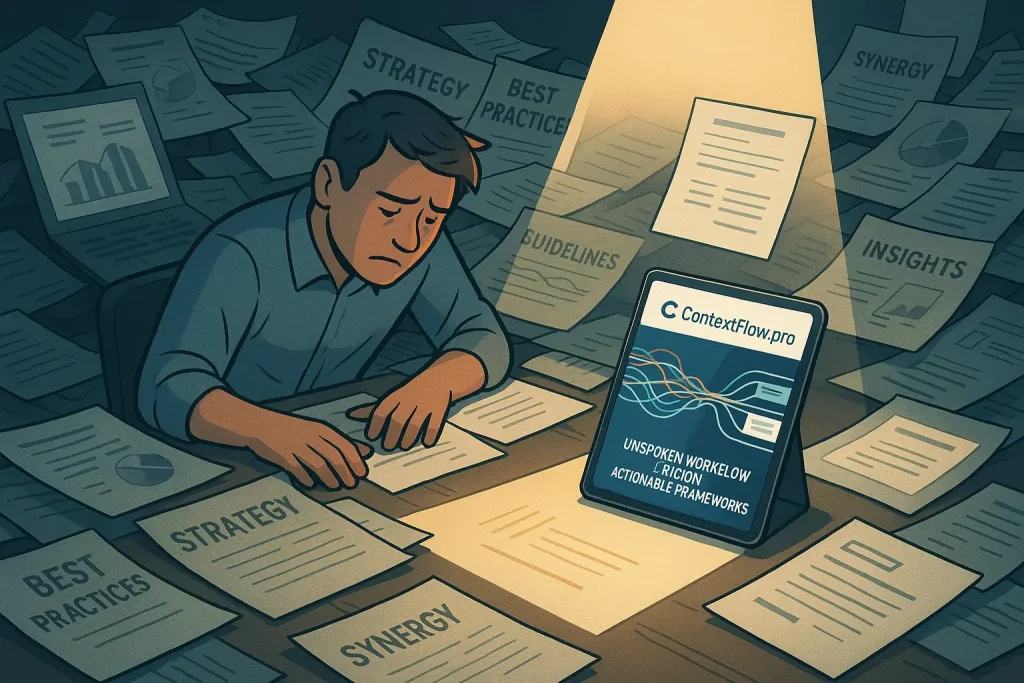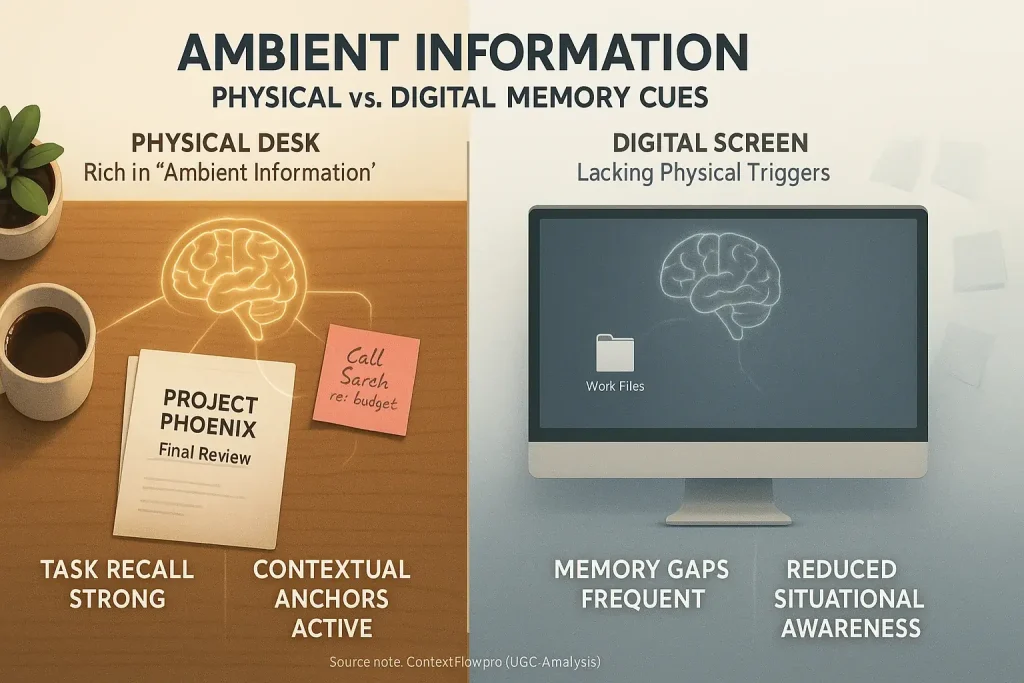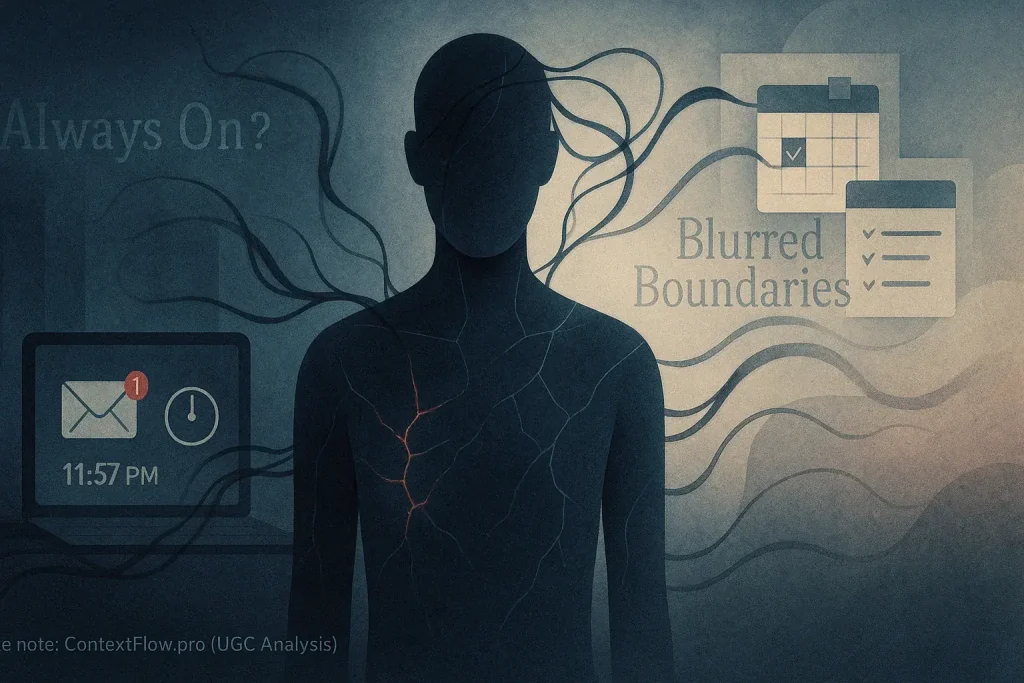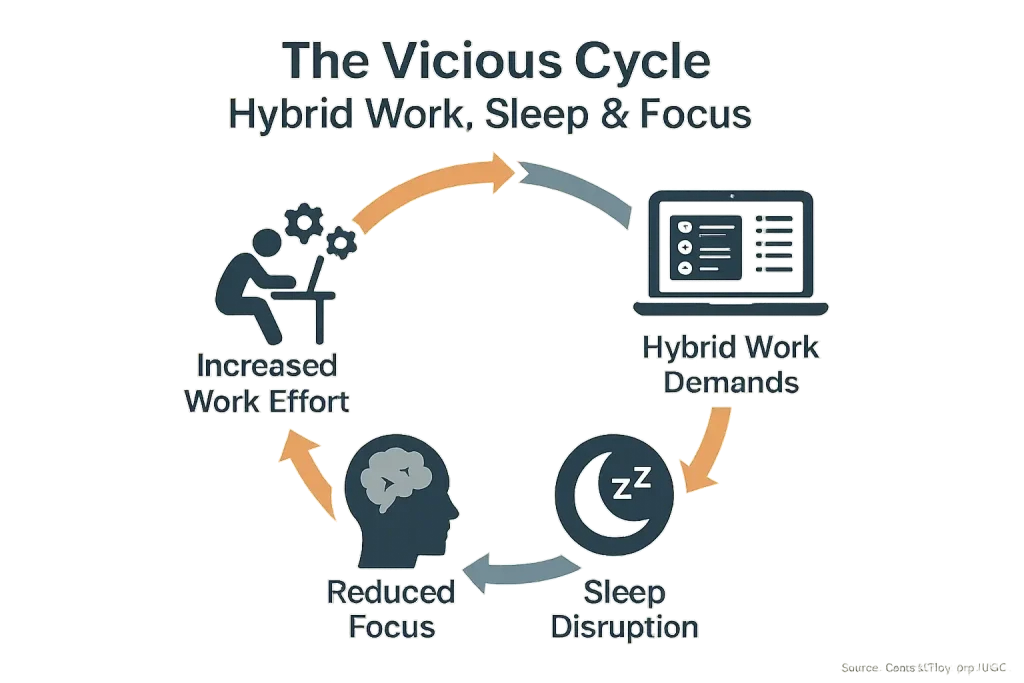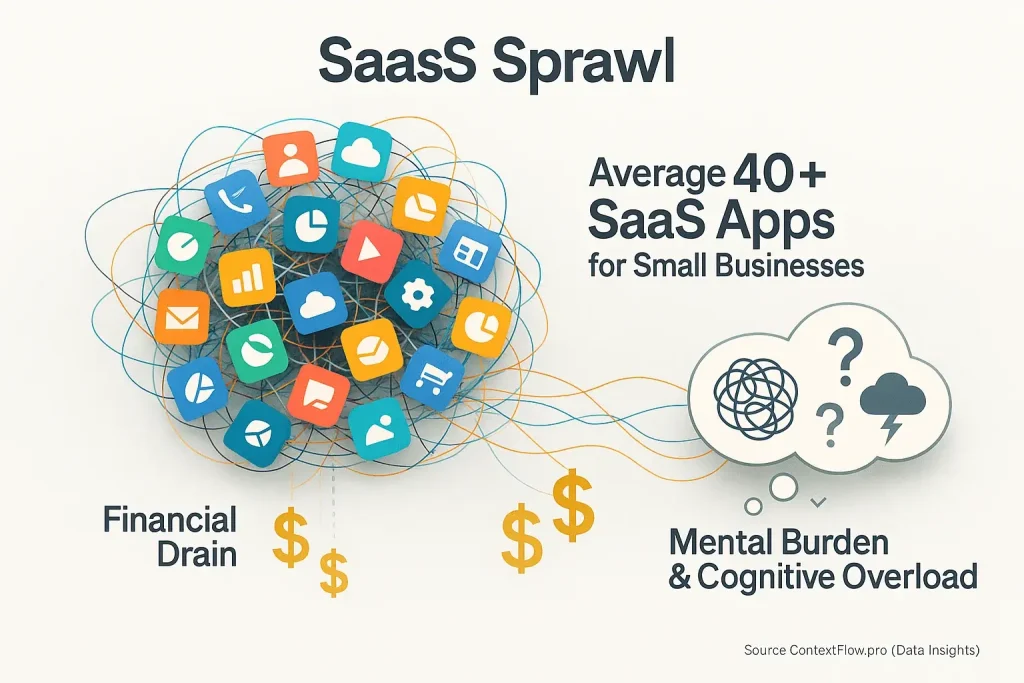The Invisible Drain: Why Physical-to-Digital Note Transfer Kills Your Workflow Momentum

Ever felt that sudden workflow jolt? Brilliant handwritten notes remain stuck on paper. They are not where you need them digitally. You are not alone in this frustration. This common snag transcends mere inconvenience. It is a genuine momentum killer. Focus breaks.
The act of transferring notes morphs into a hidden productivity drain. Think of it as a small black hole. It sucks away your sharp focus. Precious work time vanishes. Professionals frequently report this quiet theft of energy. Articulating the full impact, however, often eludes them.
ContextFlow.pro's extensive analysis of user experiences consistently highlights this issue. Note transfer friction forms a significant, yet subtle, bottleneck in hybrid workflows. This hidden barrier slows progress. Its impact frequently escapes direct notice. We will now detail specific ways this drain manifests in daily work.
Beyond Typing: The Hidden Time Sink and Information Leaks of Manual Note Transfer
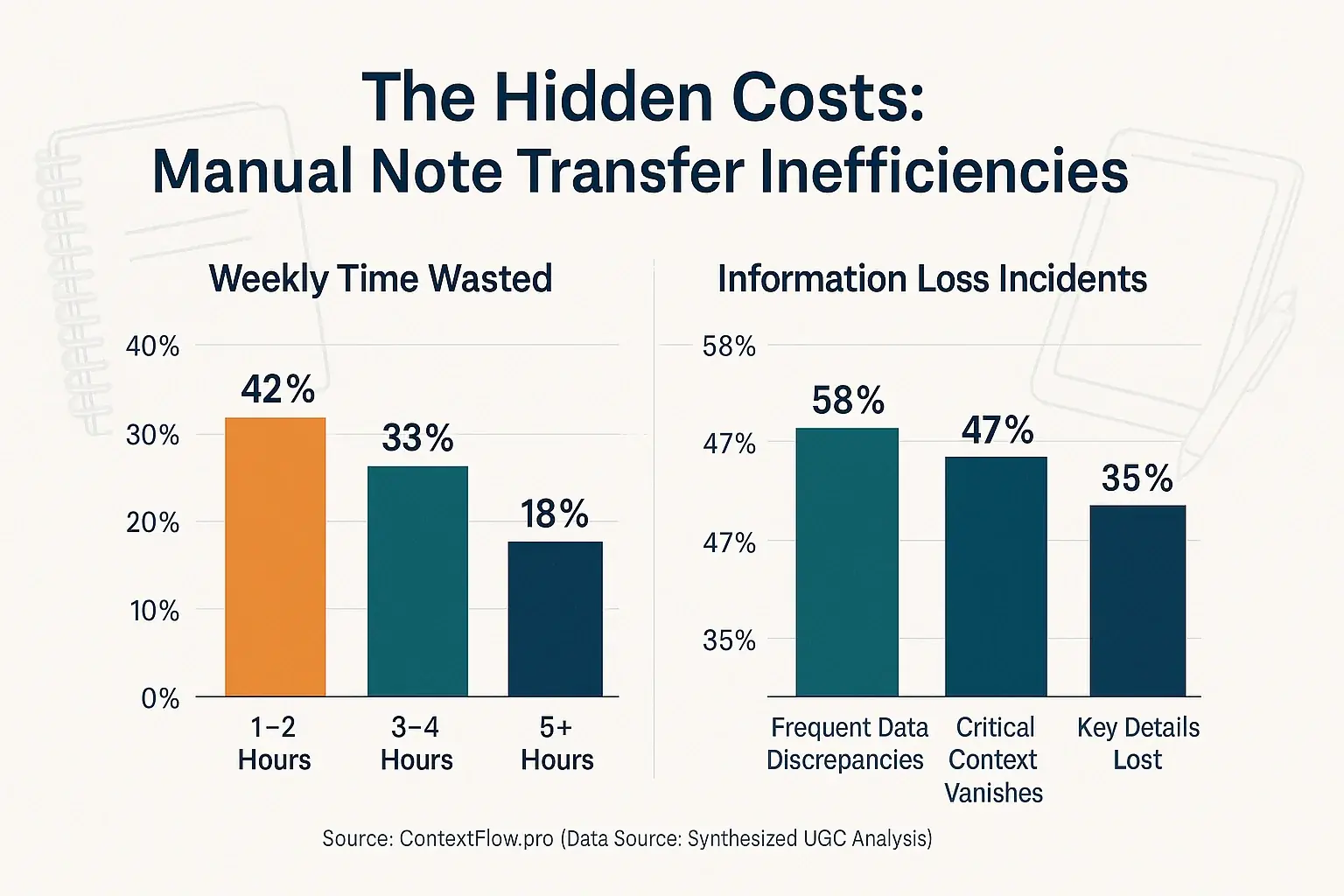
Manual note re-entry is a significant time sink. Professionals report this consistently. Many users spend hours weekly re-typing meeting notes, transcribing whiteboard sessions, or scanning documents. This is not productive work; it is pure digital busywork. The lost hours are substantial.
Information leaks plague manual note transfer. Users frequently find critical context vanishes during this process. It is not uncommon for professionals to report a key detail or subtle nuance from handwritten notes 'disappears', leading to later confusion or rework.
This dual problem directly fuels hybrid workflow friction. The true cost extends far beyond lost minutes. Accuracy suffers, trust in documented information erodes, and mental energy is needlessly depleted. These are the hidden burdens professionals carry.
For a different angle, see: juggling unconnected tools
When Tools Fail: User Frustrations with Inadequate Solutions for Digital-Physical Note Sync
Digital tools frequently fail seamless physical note integration. A common theme in user feedback is this disconnect. Many professionals find themselves staring at a powerful digital note-taking app. Yet, it feels completely disconnected from their physical whiteboard or paper notebook. The 'promise' of a paperless office often clashes directly with tool reality. The integration simply is not there.
Specific tool inadequacies fuel deep user frustration. Clunky scanning features are a constant point of contention in user discussions. Poor Optical Character Recognition (OCR) makes captured text unusable for many. Sometimes, any meaningful context transfer between physical notes and digital platforms is entirely absent. These limitations force users into inefficient manual workarounds. The supposed benefits of digital tools quickly evaporate.
This persistent gap in tool functionality is a major culprit. It directly contributes to the dreaded 'black hole' of ideas. Professionals are then left to manually bridge the digital-physical divide, a time-consuming task. Valuable insights, born on paper, often vanish in this clumsy, unsupported transfer. The tools themselves become the bottleneck, not the solution.
Beyond the Transfer: How Note Sync Friction Disrupts Your Entire Workflow & Cognitive Flow
Note transfer friction extends far beyond simple data movement. It creates a critical workflow bottleneck. Users describe a shattering of deep work when digitizing whiteboard ideas. This isn't just lost minutes; it's a complete workflow disruption. Momentum? Lost.
Frequent note transfers constantly break your concentration. Each such context switch noticeably increases your cognitive load. User experiences confirm this mental effort is significant, often deeply underestimated. This mental tax accumulates. It drains precious focus.
This pervasive friction directly reduces daily output. Mental fatigue becomes a common, unwelcome companion for many hybrid workers. What should be seamless transitions instead degrade into jarring stops and starts. Your cognitive flow suffers. The cumulative impact is substantial.
Is Your Note Transfer Method a Momentum Killer? Take Our Quick Checklist
Is Your Note Transfer Method a Momentum Killer?
Answer these quick questions to assess your current physical-to-digital note transfer efficiency.
Your checklist responses offer insights. Each 'yes' can flag a friction point. These small delays compound. They quietly steal your work momentum. Our UGC analysis reveals this recurring pattern. This tool illuminates those hidden costs to your context flow. Identifying these drags marks progress. Many professionals experience these workflow interruptions.
What now? Practical solutions can smooth these note transfers. Better methods genuinely improve your daily rhythm. ContextFlow.pro offers detailed explorations of such strategies. We analyze platforms. We share user-validated techniques. Our guides help build much smoother digital-physical handoffs. They assist in reclaiming lost productive time. Explore our site. Discover your optimal context flow.
Beyond the Frustration: User-Tested Strategies for Seamless Note Transfer & Context Preservation
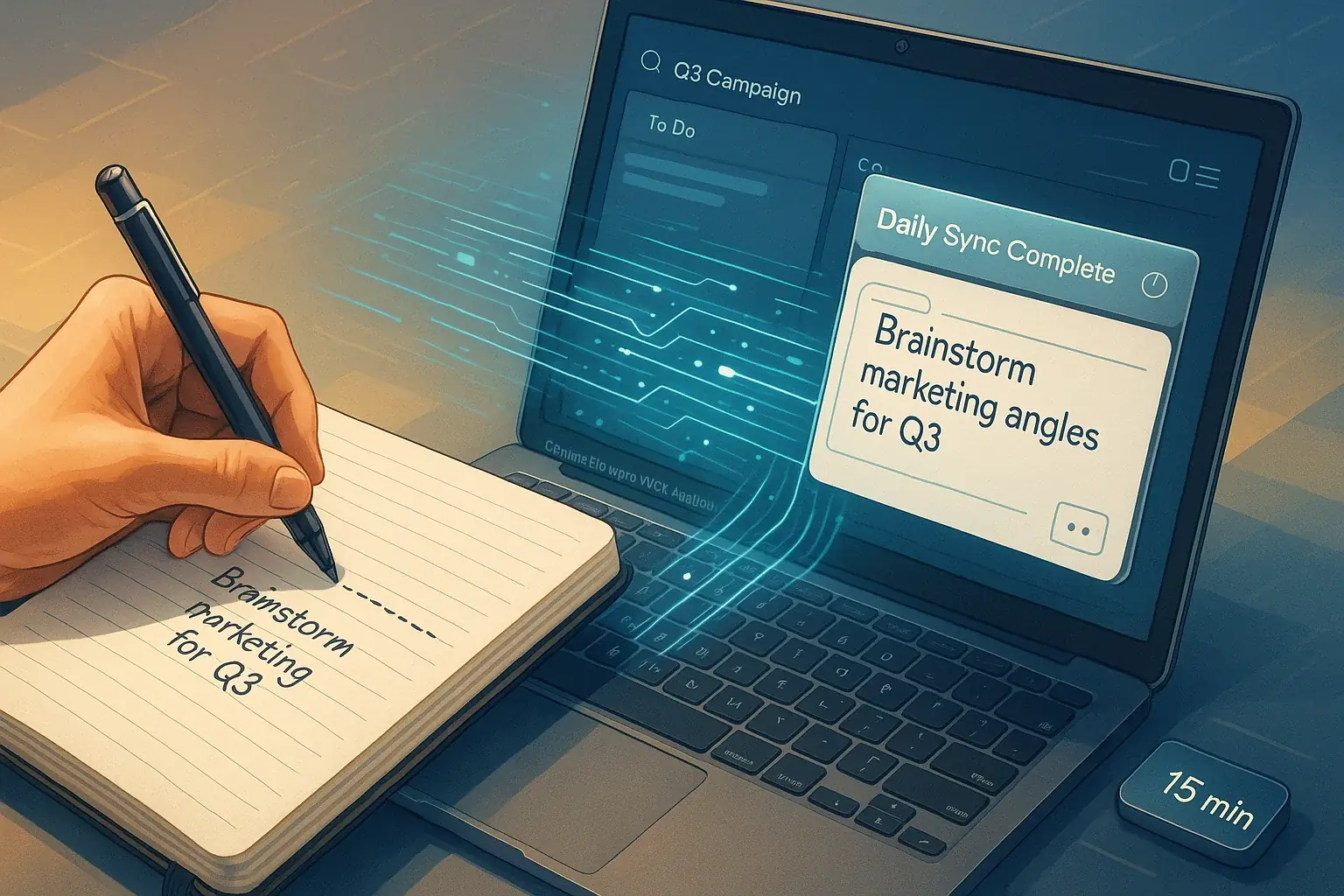
Physical note transfer often frustrates professionals. Digital systems can feel disconnected from analog thoughts. User communities, however, share clever workarounds. Their hard-won wisdom smooths this physical-to-digital jump. These methods offer real relief from common pain points.
Consistent digital capture routines deliver results. Professionals report success with regular information syncs. Consider a 'digital dump' to close your workday. Many swear by a dedicated 15-minute 'sync slot' before logging off. This simple habit ensures no brilliant idea gets left behind on paper.
Specific tools bridge the physical-digital divide. Smart notebooks are very popular. Rocketbook or Moleskine Smart Writing Sets get frequent mentions. Users praise their instant digitization capabilities. Dedicated scanning apps with robust OCR also earn high marks. These convert handwritten notes into searchable, editable digital text.
Integrating captured notes with task managers is crucial. This simple step preserves vital project context. Professionals report notes become truly powerful this way. They do not just exist digitally; they drive action. Linking notes to project management software transforms them into trackable tasks.

